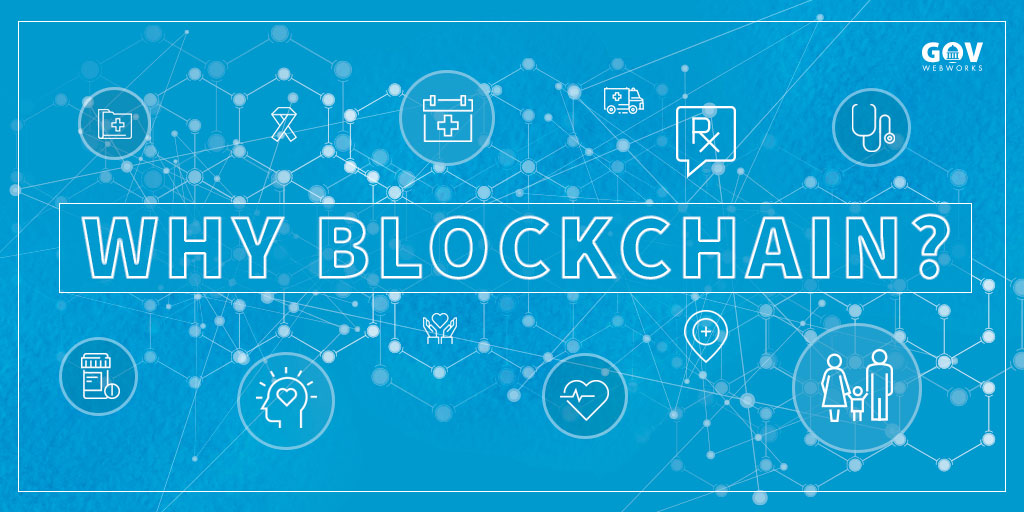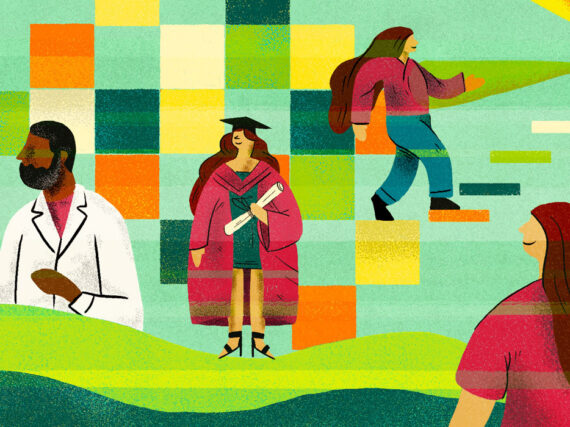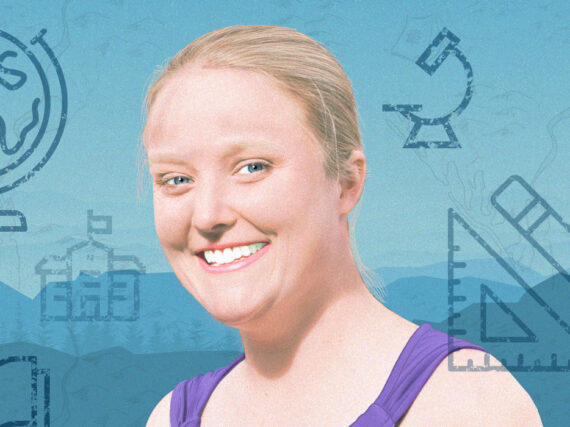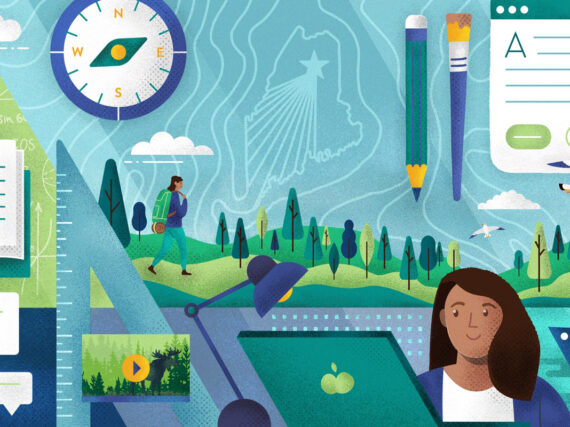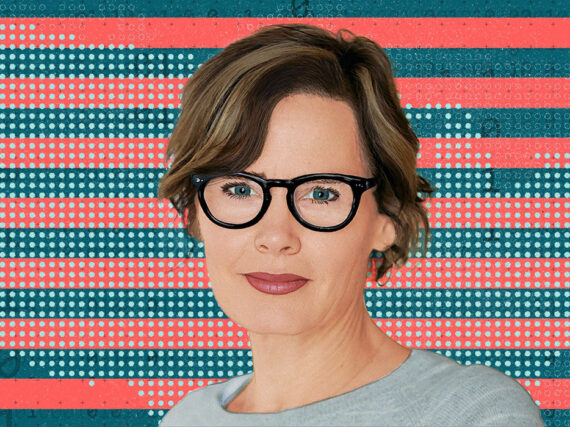Blockchain has seen its share of hype this year, but does that mean we all grasp its function? If you’re like most people, you fall in one of two camps:
- (A) Have heard the term blockchain, but don’t really understand how it works
- (B) Understand blockchain, but not clear on its applications for health and human services
If you understand blockchain and are working on ways that it can be used for health and human services, stop reading and contact us immediately, we’d like to interview you for a future blog post!
Blockchain, defined
For all the As out there, you are not alone. Blockchain can be hard to fully digest because it exists entirely in the digital world.
So what is it? Officially, a blockchain is defined by Wikipedia as an ever-growing open-source list of records stored in digital blocks. They are linked and shared through a decentralized network of individual computers. These secure, universal record books of assets are owned by no one and available to everyone. This means the information is not controlled by any one person or organization.
As Bettina Warburg says in her TED Talk, “How the blockchain will radically transform the economy,” it’s similar to Wikipedia because it’s a public source of information, in this case a registry of transactions and verifications that can be accessed by anyone with a computing device. However, unlike Wikipedia, once data is added, it cannot be modified or altered.
“Imagine that you have a piece of paper, and that any infinite amount of people are also holding that piece of paper,” explains Amanda Gutterman, CMO at ConsenSys, in a video segment called “Future of Money” by Quartz and RetroReport. “What blockchain technology does, is it makes what you wrote on your piece of paper show up, nearly at the same time, on everyone else’s piece of paper, exactly how you wrote it.”
Bitcoin’s example
Bitcoin cryptocurrency is one of the most popular uses of blockchain. Eight years after it was launched in 2009, the bitcoin digital currency network is worth more than $25 billion dollars.
“Bitcoin is built on the foundation of blockchain, which serves as bitcoin’s shared ledger,” explains Manav Gupta in Blockchain for Dummies. “Think of blockchain as an operating system, such as Microsoft Windows or MacOS, and bitcoin as only one of the many applications that can be run on that operating system.”
Bitcoin allows its users to record assets and the transfer of those assets without a third party or bank. However, the cryptocurrency that records value is not backed by gold and has no physical form. It is only worth what people believe in it, and its ability to remain secure.
The following unattributed graphic defines the steps behind a bitcoin transaction. A request passes through the P2P network of computer nodes and is validated independently by the nodes. If verified, it is combined with other transactions to create a new block of data that is added to the blockchain every 10 minutes.
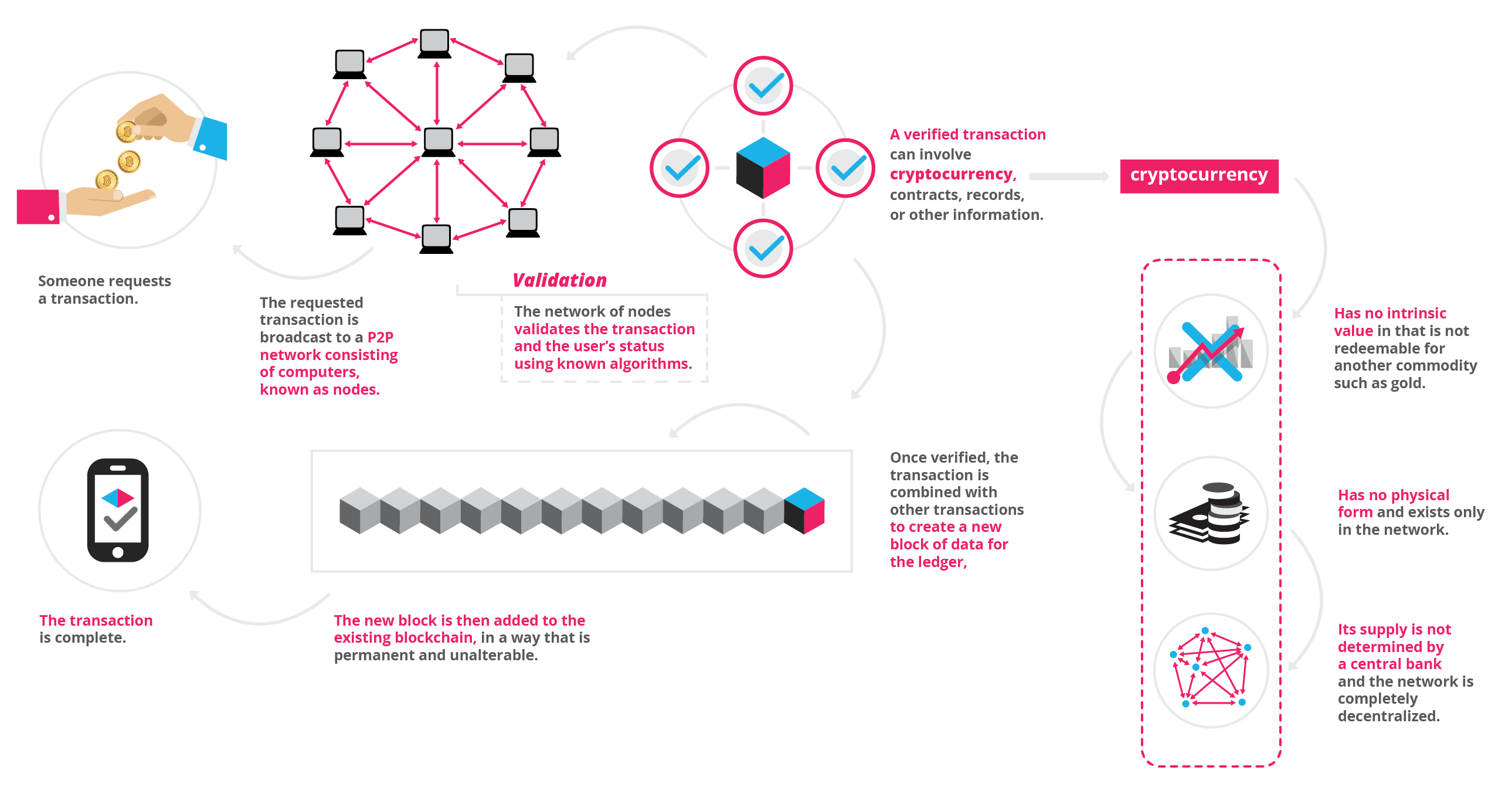
With the construction of each new block, the previous blocks are validated as unchanged. This means that once data is added to the chain, it can no longer be modified or altered.
Other such records, such as personal data, deeds, or contracts, are recorded in a similar fashion.
How can blockchain be used for health and human services?
With the explanations above, hopefully we are now all Bs, with a basic understanding of blockchain. We still may not be sure how it can be used for functions other than cryptocurrency, but we can grasp the implications that an immutable and universal record-keeping tool might have for recording and accessing health information.
“In essence, the fundamental strengths of a blockchain system lie in its data integrity and networked immutability,” says Reenita Das in the Forbes article, “Does Blockchain Have a Place in Healthcare?”
With the reminder that, “we need to understand and decode the hype cycle for blockchain technology and its realistic healthcare applications,” Das suggests the following promising use cases for blockchain in health care.
1) Clinical Health Data Exchange
- Maintaining portable, user-owned data for each person on a blockchain can facilitate data exchange systems that are cryptographically secure and immutable.
- This means instead of keeping multiple health records with many providers and insurance companies, there could be one secure, universal source of information for each person.
- “This would enable seamless access to historic and real-time patient data, while eliminating the burden and cost of data reconciliation,“ says the Forbes article.
2) Claims Verification and Billing Management
- Blockchain-based systems can automate payment processing and provide validation for claims, thus preventing fraudulent charges.
- This can help to combat the $30 million in losses from Medicare fraud in 2016.
- “Blockchain systems could help to eliminate the need for intermediaries and reduce the administrative costs and time for providers and payers,“ says Forbes.
3) Drug Supply Chain Integrity
- Blockchain can track the integrity of drugs to insure they are not counterfeits.
- This can help to identify the 30 percent of drugs considered counterfeit that are sold in developing countries.
- “A blockchain-based system could ensure a chain-of-custody log, tracking each step of the supply chain at the individual drug/product level,“ says Forbes.
4) Clinical Trials and Research
- Blockchain can provide a secure and trustworthy outlet for sharing results of clinical trials and research.
- This can help to bring notice to the 50 percent of clinical trials that go unreported.
- “Blockchain-enabled, time-stamped immutable records of clinical trials, protocols and results could potentially address the issues of outcome switching, data snooping and selective reporting, thereby reducing the incidence of fraud and error in clinical trial records,“ says Forbes.
5) Cyber Security and Healthcare IoT
- Blockchain is resistant to health data breaches from hacking and ransomware. It can also provide the IoMT (Internet of Medical Things) and healthcare IoT (Internet of Things) connected devices with increased security.
- This can help to prevent the 450 health data breaches in 2016 that affected over 27 million patients.
- “Blockchain-enabled solutions have the potential to bridge the gaps of device data interoperability while ensuring security, privacy and reliability around IoMT use cases,“ says Forbes.
The following infographic segment from Frost and Sullivan on the Future of Blockchain Technology in Healthcare spells out the above options and key benefits in more detail.
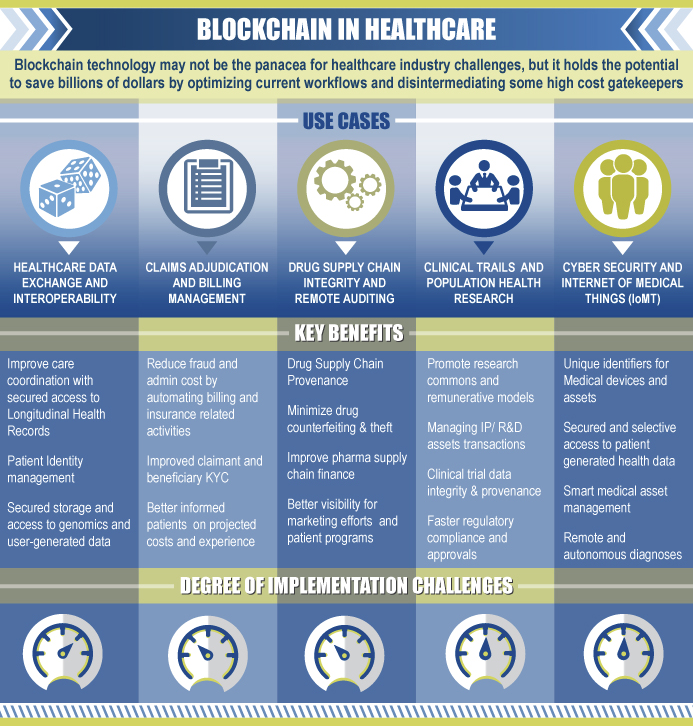
“At its core, blockchain offers the potential of a shared platform that decentralizes health data, ensuring access control, authenticity, and integrity of protected health information,” the Frost and Sullivan report claims.
“Further, the blockchain-based distributed network consensus with cryptography techniques provides an additional layer of trust to minimize cybersecurity threats for healthcare IT systems.”
Handle with care
As with any new technology, the risks are equal to the hype.
“With access to great amounts of data, comes the responsibility to use it ethically,” cautions Amanda Gutterman, in the “Future of Money” video.
“Putting still more aspects of our lives onto blockchains – like property records and debts, identity documents, and medical or criminal histories – this could vastly cut down on the red tape in our lives. But it could also vastly simplify efforts to track our every move,” adds the narrator of the video.
At GovWebworks, we often evaluate and consider new technologies that might be of benefit to our clients. While we’ve yet to leverage blockchain in any of our solutions, we are aware of its potential. For now we’re keeping an eye on the possibilities, as well as the risks.
Check back for an interview with an expert in the field on applications for further blockchain solutions.
Learn more
- How the blockchain will radically transform the economy – TED Talks
- Future of Money – Quartz and RetroReport
- Blockchain for Dummies – IBM
- Does Blockchain Have a Place in Healthcare? – Forbes
- Contact us with any questions about how we can help
